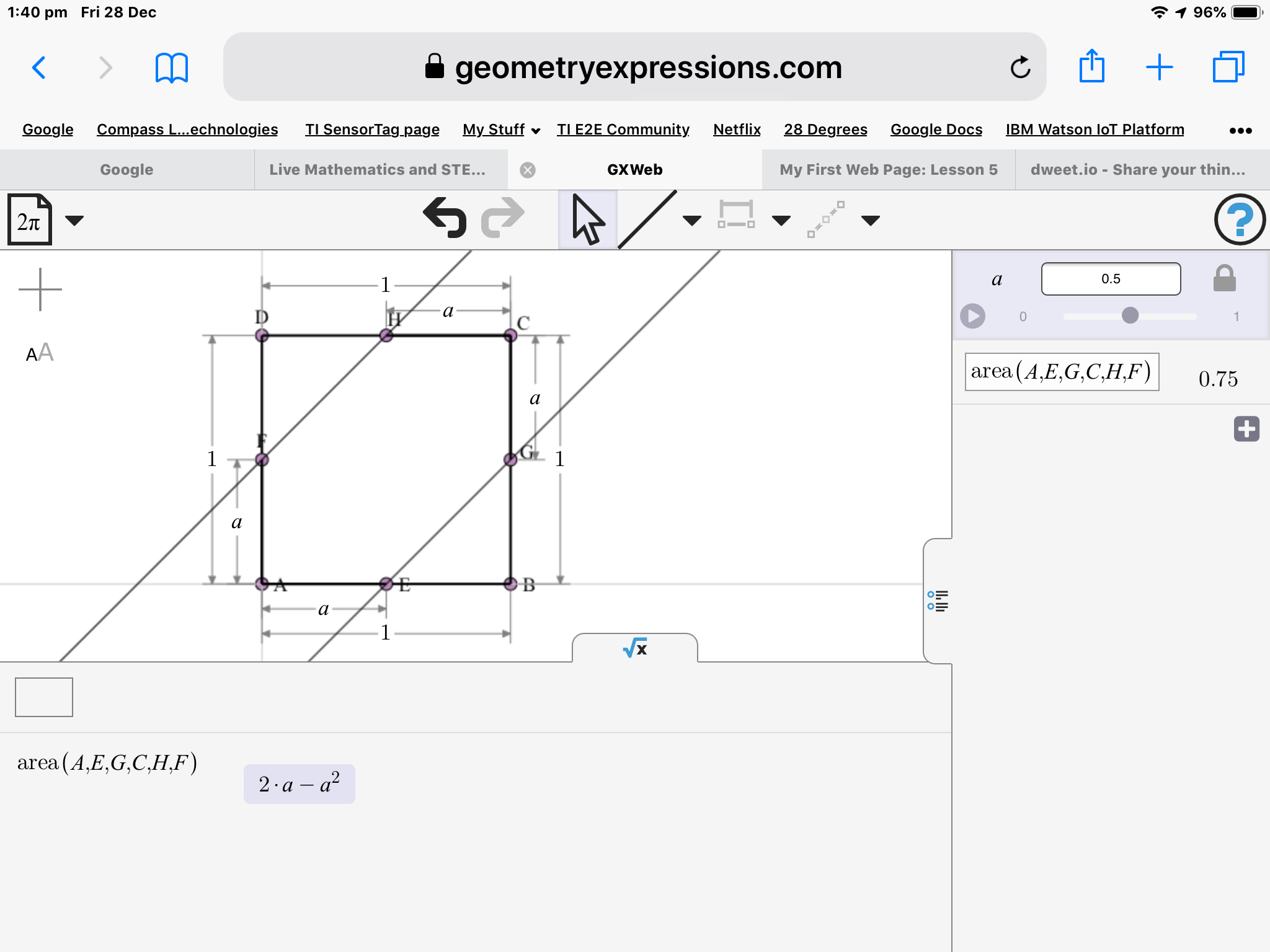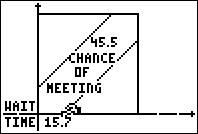|
Just wait until you try this with TI-nspire CAS! And you really should have a look at GXWeb and Geometry Expressions. |
This dynamic figure was created using the latest version of the free GXWeb from Saltire Software, as shown below.

©2019 Compass Learning Technologies ← Live Mathematics on the Web ← GeoGebra Showcase


